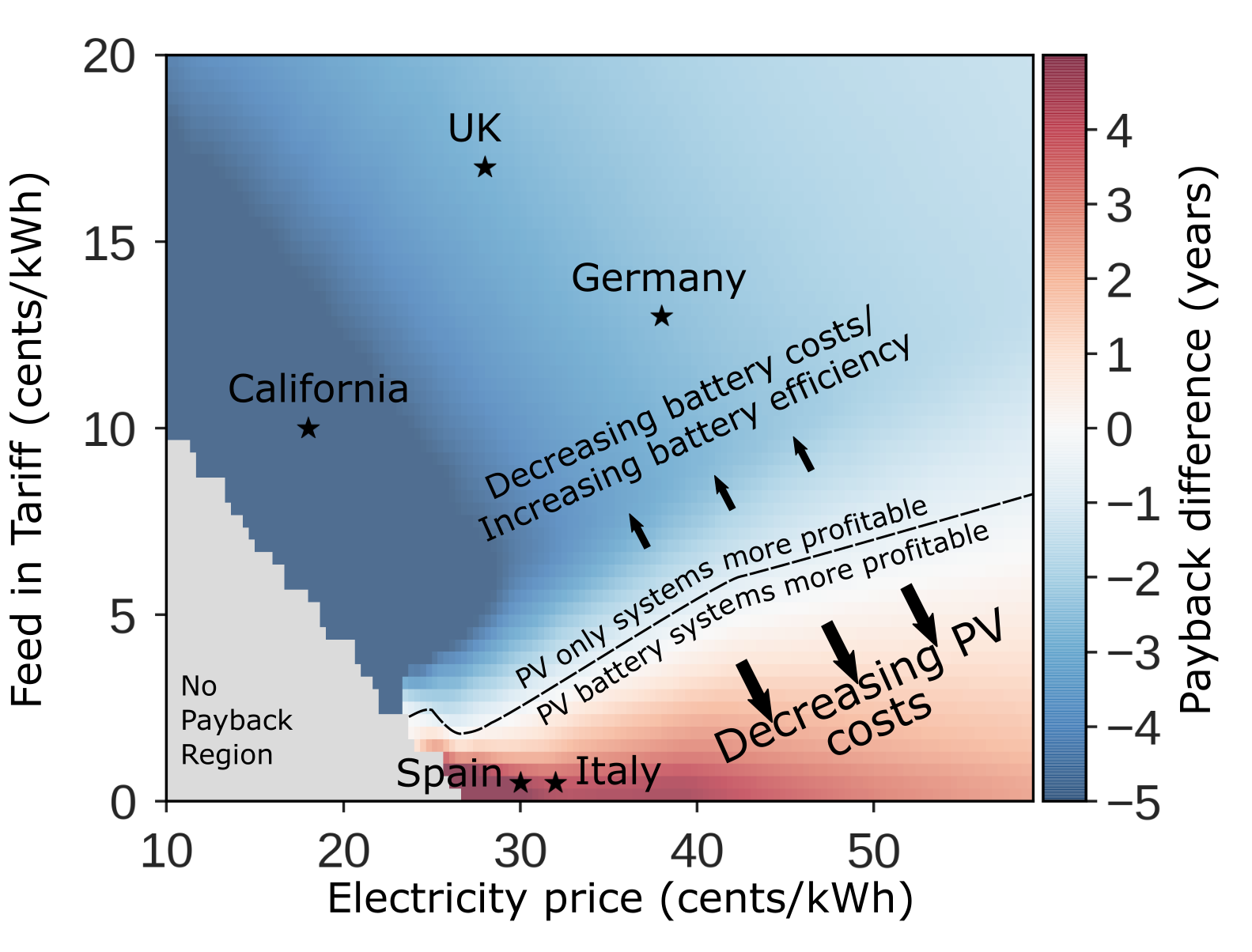Projecting battery adoption in the prosumer era
May 23, 2018
I am pleased that our paper “Projecting battery adoption in the prosumer era” has been published in Applied Energy! The website Science Trends also featured an article highlighting our work.
The paper investigates two aspects of battery adoption for residential consumers with PV generation. We use a data driven methodology based on 15-minute electricity consumption and PV generation data from the Pecan Street Project, from which electricity consumption data for several hundred households is available. The households are primarily located in Austin, TX, however other locations in the US are also included.
Firstly, the paper investigates what size of batteries are required for consumers to reach certain thresholds of self-sufficiency, and secondly, it investigates how the economic case for residential batteries looks under a range of electricity tariffs, including both current tariffs and future projections.

Figure 1: Illustrating self-sufficiency with PV and the effect of a battery. (A) The demand and generation from an example household – we see a significant amount must be exported. (B) The mean increase in household self-sufficiency for a given battery capacity. (C) The mean marginal increase in self-sufficiency as a function of battery size.
In the first part, we find that for the studied 369 consumers, the mean self-sufficiency from PV-only (without storage) is 36%, meaning that when a household installs a PV system that produces the equivalent of their yearly consumption, we expect them to export 64% of the total PV generation to the grid as it does not align with their consumption (see Fig 1A). Using batteries, we find that modest sizes can increase consumer self-sufficiency significantly, for example, a 10 kWh battery leads to a mean self-sufficiency increase of 25% across all households (see Fig. 1B). However, we find that (in terms of self-sufficiency), there is very little benefit of installing a battery with more than 3 kWh of storage per MWh of yearly PV generation (Fig. 1C).
In the second part of the analysis, we utilise consumer batteries explicitly for electricity bill minimisation. We find that while the economics of PV installations were very favourable in several regions (i.e. we find that PV has a Net Present Value (NPV) greater than \$5000/kW for the average consumer under various CA tariffs), no current tariffs were favourable for battery storage and batteries produced negative NPVs (we studied both NEM and FIT based tariffs in our household regions – Austin, Boulder and San Diego). Therefore, projecting into the future, we considered a range of retail electricity price levels and FIT remuneration rates. Our results suggest that combined PV-battery systems generally become profitable with electricity prices above \$0.40/kWh and solar rewards as low as \$0.05/kWh or below. Interestingly, we find that decreasing PV installation costs has a strong negative effect on relative attractiveness of adding a battery, while decreasing battery costs and increasing efficiency had small positive effects (see Fig 2).

Fig 2: Comparing the difference in payback between PV-only and PV-battery systems for the median consumer. Payback difference = (Payback PV-only)-(Payback PV-battery). Average retail electricity prices and subsidy levels in different regions for the year 2015 are marked for context.
The main contributions of the work are to further understanding regarding the size of energy storage for households and to define the electricity prices and subsidy levels at which a large deployment of household batteries may be expected, which is important for grid operators and utilities to understand.
For anyone interested the battery scheduling optimisation code is available on my github and is described in this post.